
Earthdawn is a fantasy role-playing game, originally produced by FASA in 1993. In 1999 it was licensed to Living Room Games, which produced the Second Edition. It was licensed to RedBrick in 2003, who released the Classic Edition in 2005 and the game's Third Edition in 2009. The license is now held by FASA Games, Inc., who have released the Fourth Edition, with updated mechanics and an advanced metaplot timeline. Vagrant Workshop released the Age of Legend edition in 2016 using alternative rules-lite mechanics.

The alien invasion or space invasion is a common feature in science fiction stories and film, in which extraterrestrial lifeforms invade the Earth either to exterminate and supplant human life, enslave it under an intense state, harvest people for food, steal the planet's resources, or destroy the planet altogether.
A glitch is a short-lived fault in a system, such as a transient fault that corrects itself, making it difficult to troubleshoot. The term is particularly common in the computing and electronics industries, in circuit bending, as well as among players of video games. More generally, all types of systems including human organizations and nature experience glitches.
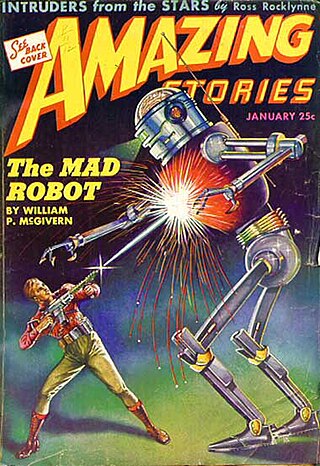
Strange and exotic weapons are a recurring feature in science fiction. In some cases, weapons first introduced in science fiction have been made a reality; other science-fiction weapons remain purely fictional, and are often beyond the realms of known physical possibility.
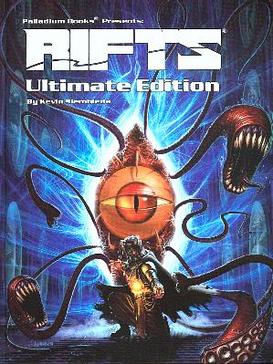
Rifts is a multi-genre role-playing game created by Kevin Siembieda in August 1990 and published continuously by Palladium Books since then. Rifts takes place in a post-apocalyptic future, deriving elements from cyberpunk, science fiction, fantasy, horror, western, mythology and many other genres.
Risk 2210 A.D. is a 2–5 player board game by Avalon Hill that is a futuristic variant of the classic board game Risk. Risk 2210 A.D. was designed by Rob Daviau and Craig Van Ness and first released in 2001. In 2002, it won the Origins Award for "Best Science Fiction or Fantasy Board Game of 2001".

Transhuman Space (THS) is a role-playing game by David Pulver, published by Steve Jackson Games as part of the "Powered by GURPS" line. Set in the year 2100, humanity has begun to colonize the Solar System. The pursuit of transhumanism is now in full swing, as more and more people reach fully posthuman states.
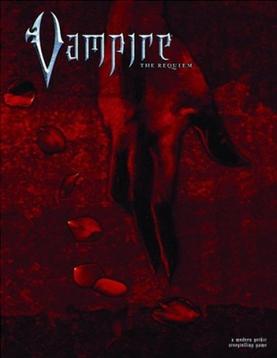
Vampire: The Requiem is a role-playing game published by White Wolf, Inc. for the Chronicles of Darkness setting, and the successor to the Vampire: The Masquerade line. Although it is an entirely new game, rather than a continuation of the previous editions, it uses many elements from the old game including some of the clans and their powers. In the first edition, it required the World of Darkness core rulebook for use, and was released alongside it in August 2004.

Palladium Books is a publisher of role-playing games (RPGs) perhaps best known for its popular, expansive Rifts series (1990–present). Palladium was founded April 1981 in Detroit, Michigan by current president and lead game designer Kevin Siembieda, and is now based in Westland, Michigan. The company enjoys the support of a small but dedicated fanbase who praise its various game series for their innovative settings and ease of adaptability to various personal preferences, play styles, and power levels.

Tribe 8 is a fantasy/post-apocalypse role-playing game designed by Philippe R. Boulle, Stéphane Brochu and Joshua Mosqueira-Asheim with visuals by Ghislain Barbe. It was first released in 1998 by Canadian publisher Dream Pod 9 as a departure from their mostly mecha line of hard science fiction games.

The Star Wars Roleplaying Game is a d20 System roleplaying game set in the Star Wars universe. The game was written by Bill Slavicsek, Andy Collins and J. D. Wiker and published by Wizards of the Coast in late 2000 and revised in 2002. In 2007, Wizards released the Saga Edition of the game, which made major changes in an effort to streamline the rules system.

The Palladium Fantasy Role-Playing Game is a game produced by Palladium Books. It is set in the Palladium world some 10,000 years after a great war between the elves and dwarves. First published in July 1983 as The Palladium Role-Playing Game, the Palladium Fantasy Role-Playing Game saw a second edition in April 1996. The two are largely compatible, though the second edition uses a later iteration of Palladium's ruleset to be more compatible with the rest of their Megaverse.
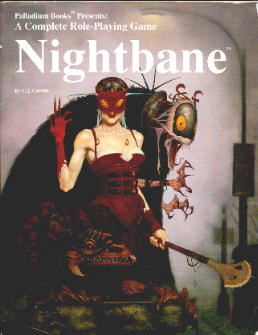
Nightbane is a dark fantasy role-playing game and setting created by C. J. Carella and published by Palladium Books.
Psionics, in tabletop role-playing games, is a broad category of fantastic abilities originating from the mind, similar to the psychic abilities that some people claim in reality.

The Martians, also known as the Invaders, are the fictional race of extraterrestrials from the H.G. Wells 1898 novel The War of the Worlds. They are the main antagonists of the novel, and their efforts to exterminate the populace of the Earth and claim the planet for themselves drive the plot and present challenges for the novel's human characters. They are notable for their use of extraterrestrial weaponry far in advance of that of mankind at the time of the invasion.
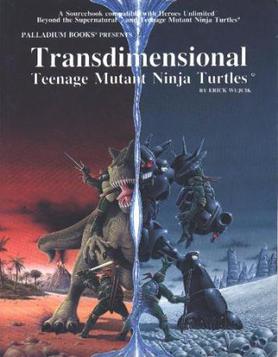
Transdimensional Teenage Mutant Ninja Turtles was a supplement for the role-playing game Teenage Mutant Ninja Turtles & Other Strangeness which covered setting and rules information for both time travel and transdimensional travel.

Splicers is a role-playing game using the Palladium Books Megaversal gaming system. The game is set in the midst of a war between humans and a world-wide computer intelligence alternately referred to as the N.E.X.U.S. or the Machine. Players take on the roles of humans engaged in the fight against robotic, android, and necrotic minions of the Machine, using technology that is primarily derived from highly advanced biotechnology. The computer intelligence has released a "nanobot plague" on the world; within a few seconds of a human touching non-precious metal, the item will begin to twist and attack the person, sometimes even animating into a robotic minion of the Machine. The result is that the nanoplague has effectively made non-precious metal allergic to mammalian life.
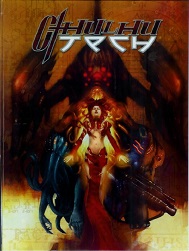
CthulhuTech is a science-fiction and horror roleplaying game created by Wildfire LLC and published by Sandstorm that combines elements of the Cthulhu Mythos with anime-style mecha, horror, magic and futuristic action. The setting is Earth in 2085 during a worldwide conflict known as the Aeon War, wherein the planet has been invaded twice: once by a black-skinned manufactured alien race known as the Nazzadi who are derived from humans and who join forces with them, and then a second time by the Mi-Go, an advanced alien civilization seemingly bent on the enslavement of humanity. Aside from these conflicts, the game focuses on other factions, such as ancient cults like the Esoteric Order of Dagon that are running amok across the planet and the eldritch horrors that are rising to destroy the world as, according to the prophecies of the Cthulhu Mythos, the "stars are right" and the Great Old Ones and their servitors are returning/reawakening to reclaim the Earth. The game uses a proprietary ten-sided die (d10) system titled "Framewerk."
The Old Ones are a race of Alien Intelligences within the megaversal setting of Palladium Books' game module PFRPG. The Old Ones are the most powerful forces ever to have existed in the various Palladium game settings, and their power dwarfs that of 'ordinary' Alien Intelligences, beings which are in general far more powerful than the gods themselves.

WarioWare: Get It Together! is a party video game developed by Nintendo and Intelligent Systems and published by Nintendo for the Nintendo Switch. It is the tenth installment in the WarioWare series, following WarioWare Gold (2018) for the Nintendo 3DS, and was announced at E3 2021 during the Nintendo Direct presentation. A demo of the game was released on the Nintendo eShop on August 19, 2021. The game was released worldwide on September 10, 2021. It sold 1.27 million copies worldwide.
















